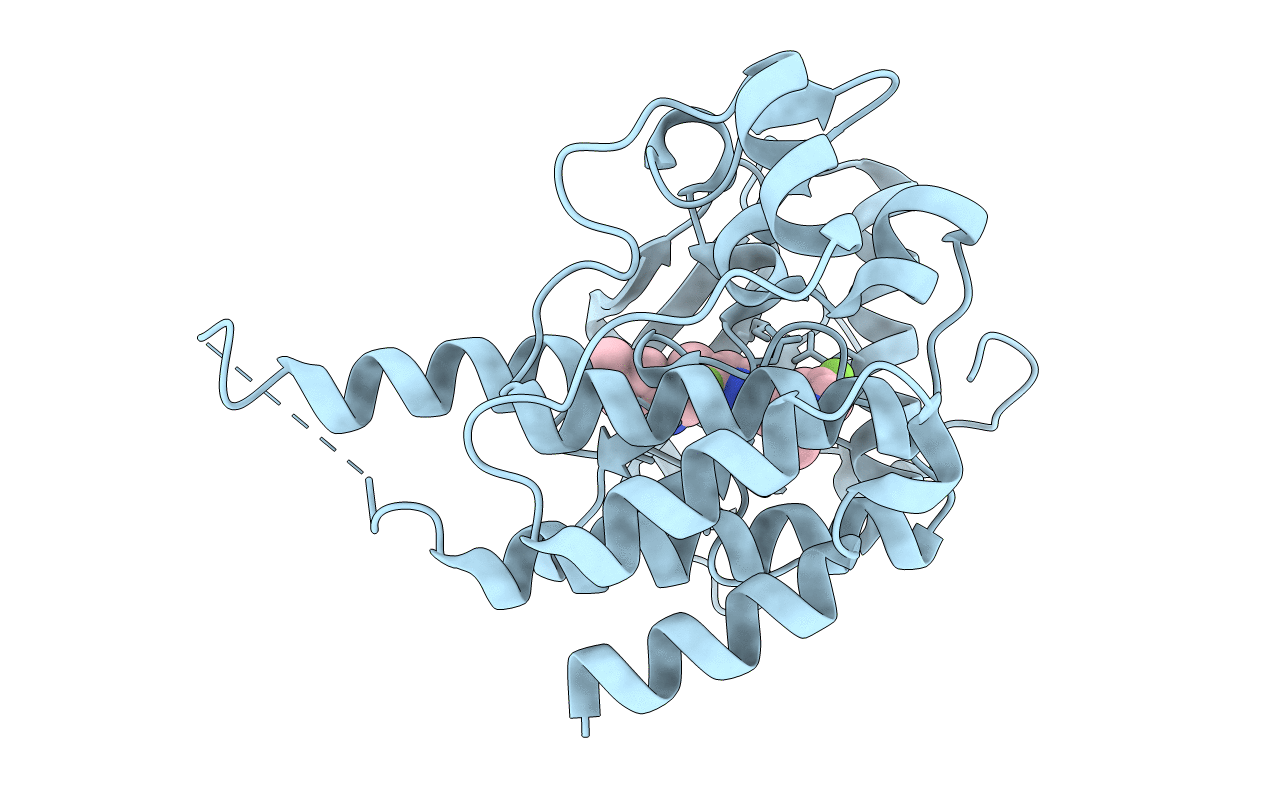
Deposition Date
2018-11-14
Release Date
2019-09-18
Last Version Date
2023-10-11
Entry Detail
PDB ID:
6N33
Keywords:
Title:
Crystal structure of fms kinase domain with a small molecular inhibitor, PLX5622
Biological Source:
Source Organism:
Homo sapiens (Taxon ID: 9606)
Host Organism:
Method Details:
Experimental Method:
Resolution:
2.25 Å
R-Value Free:
0.21
R-Value Work:
0.18
R-Value Observed:
0.18
Space Group:
P 43 21 2


